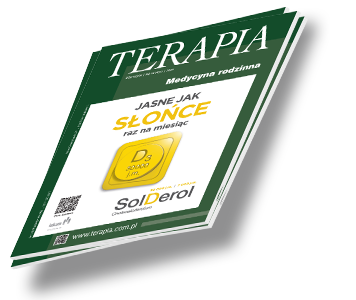Pediatria Terapia 2024, 2 ( 433 ) : 48 - 53
Żelazo i jego niedobory – czy jest coś nowego?
Iron and its deficiencies – is there anything new?
Organizm potrzebuje żelaza m.in. do syntezy białek transportujących tlen, w szczególności hemoglobiny i mioglobiny oraz do tworzenia enzymów hemowych i innych enzymów zawierających żelazo zaangażowane w transport elektronów oraz w reakcje utleniania i redukcji (1,2). Dla mężczyzny ważącego 70 kg całkowita ilość żelaza w organizmie wynosi około 3,5 g (50 mg/kg). Większość żelaza w organizmie znajduje się w hemoglobinie krwinek czerwonych (65%; 2300 mg). Około 10% występuje w mioglobinie we włóknach mięśniowych i innych tkankach (w enzymach i cytochromach) (350 mg). Pozostała część żelaza w organizmie jest magazynowana w wątrobie (200 mg), makrofagach układu siateczkowo-śródbłonkowego (RES; 500 mg) i szpiku kostnym (150 mg). W okresie przedmenopauzalnym u kobiet, co zrozumiałe, ogólna zawartość żelaza w ustroju (zwłaszcza frakcja zmagazynowana, 250–300 mg) jest niższa niż u mężczyzn.

Zaloguj się i przeczytaj bezpłatnie całą treść artykułu.
Nie masz jeszcze konta dostępowego?
Zarejestruj się bezpłatnie, a otrzymasz:
* dostęp do wszystkich doniesień oraz pełnych tekstów artykułów naukowych w naszej Czytelni,
* prawo do bezpłatnego otrzymywania newslettera "Aktualności TERAPIA" z przeglądem interesujących i przydatnych wiadomości ze świata medycyny oraz systemu ochrony zdrowia w Polsce i na świecie,
* możliwość komentowania bieżących wydarzeń oraz udziału w ciekawych quizach i konkursach.
Zapraszamy serdecznie, dołącz do naszej społeczności.



Dodaj komentarz